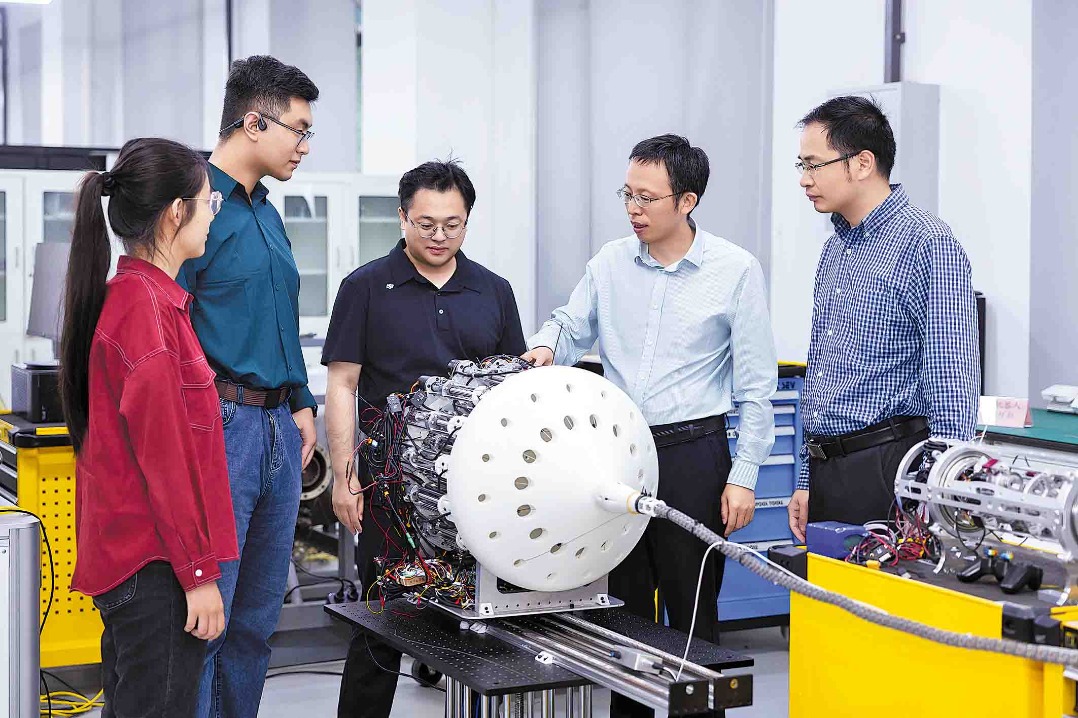Experts' takes on China-US relations

Editor's note: The foundation for China-US relations is laid by their people. The fundamental principles guiding China-US relations are mutual respect, peaceful coexistence and win-win cooperation, and the two countries have broad common interests in a wide range of areas, including traditional and emerging areas such as the economy, trade, agriculture and climate change. Three experts offer their insights to China Daily.

A strong boost to China-US trade relationship
By He Weiwen
The historic meeting between President Xi Jinping and US President Joe Biden on Nov 15 signifies the stabilization and improvement in bilateral ties between two of the world's largest economies, something that is crucial for peace and stability in the world.
The two presidents stressed the importance of the two countries treating each other with respect and finding a way to coexist peacefully, and keeping the lines of communication, preventing conflict, upholding the United Nations Charter, cooperating on areas of shared interest and responsibly managing the competitive aspects of the relationship.
The significant, positive outcome of the Filoli Estate summit meeting will undoubtedly provide a strong, much-needed boost to China-US bilateral trade relations which have been largely affected by the overall tensions in recent years. From January to October this year, Chinese exports to the US fell by 15.3 percent over a year ago. The US official trade data show that during Q1-3 of 2023, its two-way trade with China fell by 20.5 percent year-on-year, but remained stable with North American partners (Mexico and Canada), and was up sharply with EU countries (up 13.4 percent with Germany, up 10.9 percent with the Netherlands and up 3.9 percent with the United Kingdom). The trend has been especially obvious in its advanced technology products. As its global export increased by 7.1 percent over a year ago, its exports to China fell 12.7 percent while that to the European Union were up by a sharp 30.8 percent.
Apparently, there has been a trend of supply chain shifts to North America and the cross-Atlantic, at the cost of trans-Pacific areas, notably China. It is the result of the US' "high fence" policy, a cross-board massive high-tech trade and investment restrictions on China. The policy, in turn, is the logical result of its strategic containment of China, positioning China as its largest geopolitical challenge. Hence, the bilateral trade relationship, if it is to pick up again, depends on the stabilization and improvement of bilateral strategic ties.
The positive outcome of the Filoli Estate meeting will set a strong base, orientation and guarantee for further improvement in bilateral trade ties. Trade relationship serves as the ballast stone for the overall bilateral relationship, and its improvement reinforces the base of strategic ties between China and the US.
China-US trade relations have witnessed a gradual stabilization and improvement over recent months. US Treasury Secretary Janet Yellen and Secretary of Commerce Gina Raimondo have reiterated repeatedly no-decoupling with China. The recent China International Import Expo in Shanghai attracted an official US pavilion, highlighting the rise in US exports of agricultural products to China.
China-US bilateral trade, too, is showing initial signs of improvement. After a two-digit free fall since September, 2022, it clawed back into single-digit territory in August 2023. The US returned to China's largest export market again in each of the past three months. US export to China performed even better, off only 3.7 percent year-on-year during January to October, 2023, compared to a 15.3 percent fall in Chinese exports to the US.
A healthy and expanding trade and investment relationship benefits people of both China and the US. A US-China Business Council report said that US exports to China supported over 1 million jobs in the US in 2021. The relevant data also shows that US businesses in China had annual sales of over $700 billion. Strict restrictions on chip exports to China also hurt US chip giants — including Intel, Qualcomm and Nvidia — badly. It is estimated reducing tariffs on Chinese exports to the US could reduce US inflation by 1 percent. Hence, it is highly anticipated that, the successful Xi-Biden meeting will give bilateral trade a strong boost.
Meanwhile, tremendous amount of hard, substantive work is needed to make it a reality.
First, China and the US need to keep improving the overall relationship at the strategic level, creating a more favorable environment for the business community of both countries. An AmCham member survey in March showed that the greatest business risk was the tension between China and the US, which turned them more pessimistic about short-term business prospects. With the relationship improving, the US business confidence is recovering, said Eric Zheng, president of the US Chamber of Commerce in Shanghai.
Second, both governments, backed by the business community, need to work on practical issues. The joint working groups on finance, economy, export control information and business should step up functioning. The national security issue should be a priority on the agenda. If the US keeps positioning China as the largest geopolitical threat, a wide range of technologies may be regarded as national security concerns. Logically, the "small yard" will be very large, leading to extensive trade bans or restrictions.
Third, the joint working groups need to listen to concerns raised by businesses on industry policies, subsidies, equal treatment and fair competition, to provide a WTO rules-based level playing field for businesses in both China and the US.
Fourth, we should step up work on major trade and investment projects, increasing the trade and investment volume as soon as possible. Meanwhile, trade and investment activities at the subnational and local levels in particular, should gain further momentum. The more practical the activities, the stronger the ballast stone.
It is hoped that China-US two-way trade will stop falling by the first half of 2024, rise during the second half of 2024 and hit a new high in 2025, benefiting the peoples of both countries and contributing to world stability and prosperity.
The author is a senior fellow with the Center for China and Globalization. The views don't necessarily represent those of China Daily.



































